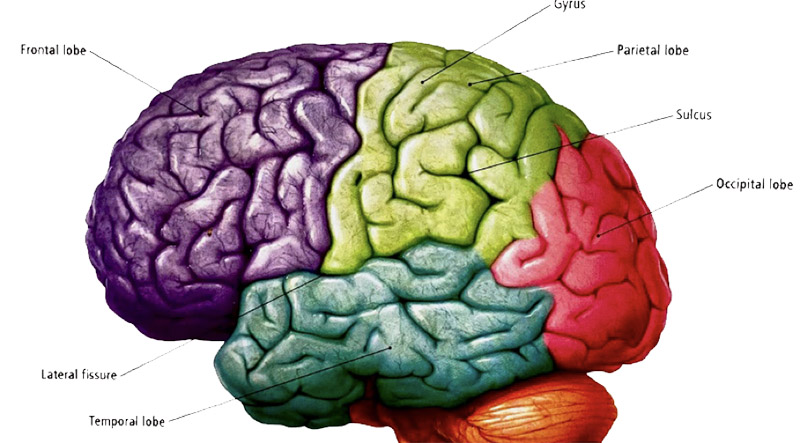By: Prof. Dr. Seyed Saeid Zamanieh Shahri, MD and Prof. Dr. Sonia Sayyedalhosseini, MD
Brain Cancer (Part II):
Symptoms of Brain Tumors: depending on the location of the tumor, the symptoms can be different. Headache, dizziness, vision impairment and cognitive dysfunction can be related to brain tumor. In general, the symptoms related to brain tumors are divided into three
general categories:
۱) Symptoms caused by increased intracranial pressure: Intracranial pressure is the sum of the pressures that from inside the skull pushes toward the skull walls. This pressure is caused by the presence of brain tissues, cerebrospinal fluid and blood in the cerebral vessels. In a normal state, each tissue does its job properly. But when intracranial pressure increases, blood vessels may be blocked and blood supply to the brain may be disturbed. Or, for example, the function of that part of the brain may be impaired as a result of putting pressure on a part of the brain.
The symptoms related to increased intracranial pressure are the first symptoms that appear when a brain tumor is diagnosed. Headache, vomiting, altered state of consciousness in the form of coma or drowsiness, pupil dilation on the side where the tumor occupies the space of the cerebral hemisphere, and papilledema are symptoms caused by increased intracranial pressure. Also, increased intracranial pressure can cause pressure on the brainstem and cause the brainstem to herniate into the spinal canal. This complication is very dangerous and has a high risk of death.
Another side effect caused by increased intracranial pressure is the non-closure of the fontanelles of babies. The bones of the human skull are made up of several pieces, and the place where they join at birth has small spaces that are later closed by the formation of bone. If the intracranial pressure increases, before the fontanelles close, the baby’s skull may grow larger than normal and remain the same until the end of life.
۲) Symptoms related to functional disorders: Depending on the location and size of the tumor, certain areas of the brain may be under pressure and the function of that part of the brain may be impaired. For example, the cerebellum is responsible for maintaining the body’s balance, and if the cerebellum is affected, the body’s balance will be disturbed. Or a part of the cerebral cortex that is responsible for speech, if infected, may cause a person to have a speech disorder.
Cognitive disorders, movement disorders, facial and muscle paralysis, impaired sense of smell, and swallowing disorders are other symptoms associated with excessive pressure on different parts of the brain.
۳) Symptoms related to irritability: People with brain tumors constantly feel tired and bruised. They also experience tremors, convulsions and epilepsy. It is interesting to know that people with brain tumors, despite the presence of increased intracranial pressure and other complications and symptoms of this disease, do not feel any pain in the brain, because the tissue of the brain itself is devoid of any nerves and pain sensors. Even in surgeries related to the brain, if the person is conscious, he/she will not feel any pain due to the manipulation of the brain tissues.
Grades of Brain Cancer:
Not all brain tumors are the same, even if they originate from the same type of brain tissue. Tumors are graded based on the shape of the tumor cells under the microscope. The grade assigned to the tumor also gives a general impression of the growth rate of the cells. These grades are as follows from benign to the most aggressive:
• Grade I:
The tumor is benign. The cells are similar to healthy brain cells and grow slowly.
• Grade II:
the tumor is malignant. The cells are less similar to normal cells than grade I tumor cells.
• Grade III:
Malignant tissue has cells that are different from healthy cells. Abnormal cells grow actively and have a completely abnormal (anaplastic) shape.
• Grade IV: Malignant tissue has cells that are completely abnormal and grow and multiply rapidly.
Stages of Brain Cancer:
Brain cancer is staged according to the grade and cell type. The stage of the cancer indicates the extent of the cancer. Since brain cancer, unlike cancer of other organs such as breast or lung cancer, does not spread to other organs, brain cancer is staged based on the stage called TMN according to the location and spread of cancer cells.
Diagnosis:
If someone has symptoms that indicate the possibility of a brain tumor, doctor should perform a physical examination and asks questions about personal and family medical history.
• Examination of the Nervous System:
the doctor will check vision, hearing, alertness, muscle strength, coordination, and (reflexes) and also eyes to check the swelling caused by the pressure of a tumor on the nerve that connects the eye to the brain.
• MRI:
A large machine equipped with a strong magnet, which is connected to a computer, is used to take detailed pictures of different areas of the head. Sometimes a special dye (contrast substance) is injected into the blood vessels in arm or hand, to help show the differences in the brain tissues more; These images can show abnormal areas, such as tumors.
• CT scan:
X-ray machine, connected to a computer, takes a series of detailed pictures of head; Sometimes contrast material is also injected into the veins of arm or hand. Contrast material makes abnormal areas easier to see.
Brain metastases are the most common types of brain tumors in adults. These metastases originate somewhere other than the brain and are transported to the brain through the blood. The most common origin of these tumors is lung, breast, skin, and with less prevalence, kidney cancer or colon cancer. In fact, brain metastases are tumors that first occur in tissues and organs outside the brain. Then they reach the brain through the blood and cause illness or death in people.
Brain tumors in children:
Children are more likely to develop tumors in the lower part of the brain, which includes areas that control sleep/wake function, movement, and coordination. Glioma and medulloblastoma are the most common types of tumors in children. In many children, treatment causes all symptoms of cancer to disappear (cure). Because a child’s nervous system is still developing, some children may develop physical, behavioral, or learning disabilities as a result of the tumor or treatment. Many health care professionals specialize in treating children and adults. Some hospitals have personnel such as play therapy, music therapy, or art therapy that can help children deal with therapeutic challenges. Also, rehabilitation will be very important for child’s recovery. Talk to child’s medical team about treatment options, what to expect, and your concerns. A hospital social worker can provide practical and emotional support.















